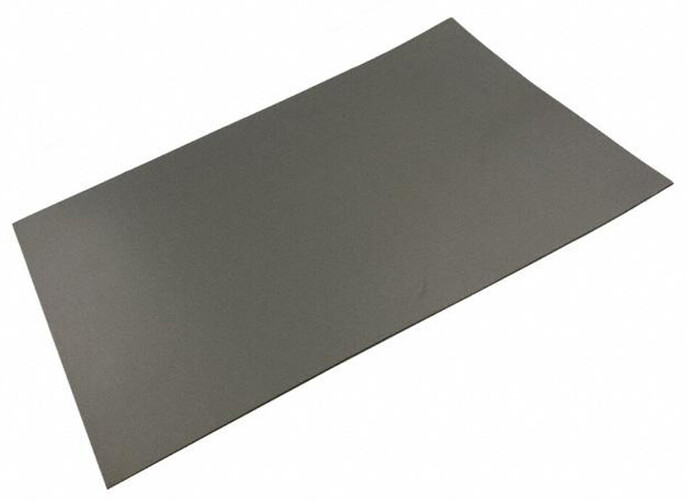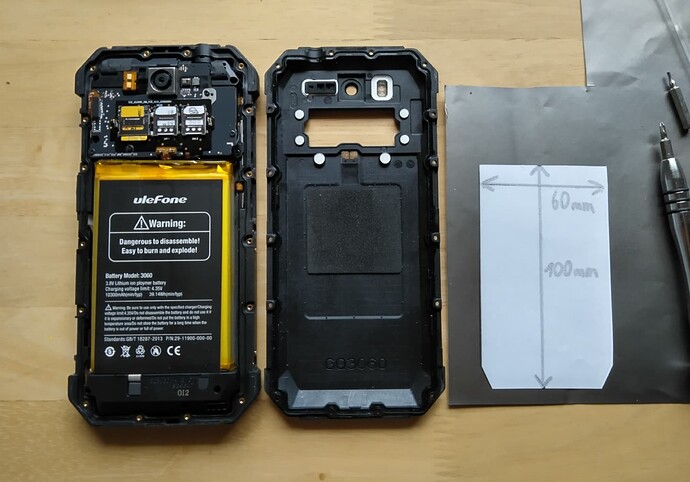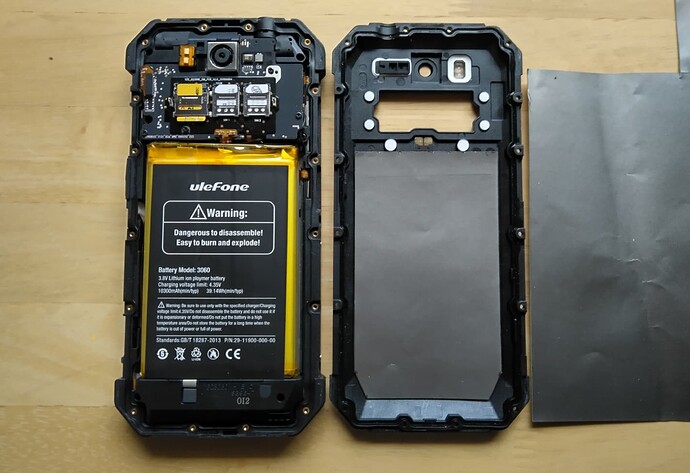If your phone has lackluster NFC performances with implants and you’re willing to open it, this may help.
I tested it on my Ulefone Armor 3W - the innards of which are easily accessible - but it should work with other phones provided the NFC patch antenna is separate (attached to the back cover) or not permanently glued to the battery, and you manage to open the phone’s case without breaking something. Repairability isn’t today’s electronics’ forte, sadly…
In many cellphones, the NFC antenna is right up against a large mass of metal - the battery - because there’s a limited amount of space inside the case, the battery takes up a lot of it and the antenna has to go somewhere, and it’s convenient for manufacturers to install the battery with the NFC antenna as one unit.
The problem with that arrangement is that the metal inside the battery effectively wastes a significant portion of the RF power emitted by the NFC antenna in the form of eddy currents. That’s power you want to power your implant with, that heats up the battery instead.
It’s always a compromise. But if the phone reads large passive tags easily enough and couples in HCE mode with point of sales terminals, usually that’s good enough for many manufacturers. They’re not gonna spend anymore time and money on improving NFC if it’s good enough: NFC isn’t the important function for them that it is for us.
But you can improve NFC performances by shielding the battery from the antenna. All you need is a thin RF ferrite sheet, such as this one:
Cut a piece as wide as will fit inside the phone’s cover and insert it between the battery and the antenna. Here in my Ulefone Armor 3W, the antenna is on the back cover, and it connects to two pins above the battery when the cover is reassembled, so it makes things easy to see:
Then put the phone back together. With a bit of luck, it’ll perform better - and possibly a lot better: my Armor 3W went from reading a xM1 okay at contact distance to hitting it 10 mm away easily. And it can now read my finicky BeUno somewhat reliably, while it could almost never read it before. It’s suddenly become a phone with good NFC for a few euros and 20 minutes of work!
RF sintered ferrite sheets aren’t cheap, but you only need one and if it works, it’s well worth it.


